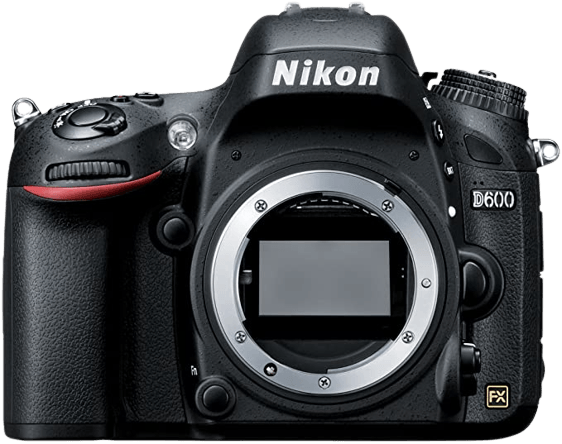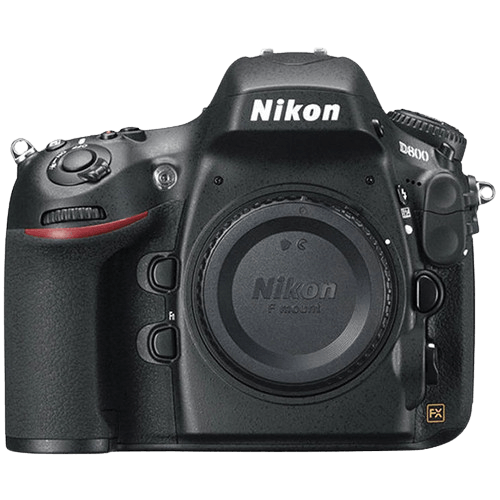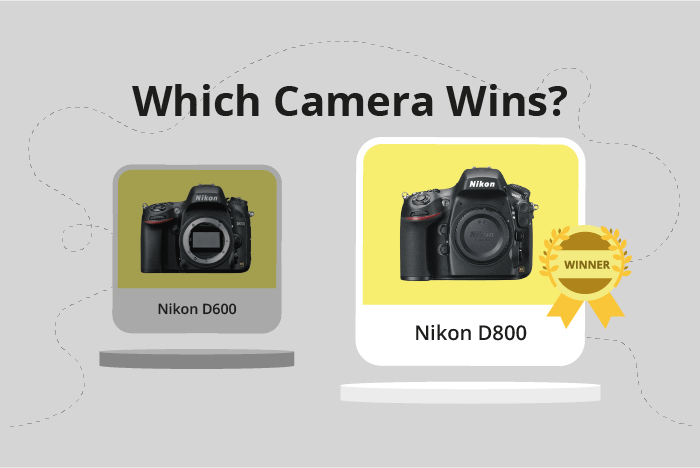Nikon D600 vs D800 Comparison
Nikon D600

Nikon D800

The Nikon D800 emerges as the winner with a score of 69/100, compared to the Nikon D600‘s 66/100. Both cameras are DSLR models, released in 2012, and share the same dimensions (82mm in depth). The D800 has a higher launch price of $2999, while the D600’s launch price is $2100.
The D800’s superiority lies in its higher score, implying better overall performance. However, the D600 boasts a lighter weight at 850g (1.87lbs), making it more portable than the 1000g (2.20lbs) D800. This could be an advantage for those prioritizing portability.
Ultimately, the Nikon D800 is the better camera based on the score, but the Nikon D600 may appeal to those seeking a lighter option.
Nikon D600 vs D800 Overview and Optics
The Nikon D800 triumphs over the Nikon D600 in terms of optics, with a score of 74/100 compared to the D600’s 70/100. Both cameras share several specifications, including the CMOS sensor type, Expeed 3 processor, full-frame sensor size, Nikon F FX lens mount, and the absence of image stabilization.
The D800 outperforms the D600 with its higher megapixel count of 36.3, as opposed to the D600’s 24.3. This difference allows the D800 to capture more intricate details, resulting in sharper and more detailed images. Additionally, the D800 has a slightly higher DXOMARK score for the sensor at 95, compared to the D600’s 94. This one-point difference indicates that the D800’s sensor performs marginally better than the D600’s.
On the other hand, the D600 has a faster shooting speed of 5.5 frames per second, compared to the D800’s 4 frames per second. This advantage makes the D600 more suitable for capturing fast-moving subjects, such as sports or wildlife photography. However, this is the only area where the D600 outshines the D800 in terms of optics.
Taking these factors into account, the Nikon D800 emerges as the superior camera in terms of optics, due to its higher megapixel count and marginally better sensor performance. The D600’s faster shooting speed is its only advantage, which may appeal to photographers who prioritize capturing fast-moving subjects. Ultimately, the choice between the two cameras will depend on the individual’s photography needs and preferences.
Nikon D600 vs D800 Video Performance
The Nikon D600 and D800 both have a video score of 57/100, indicating that they share similar video capabilities. Both cameras offer Full HD video resolution with maximum dimensions of 1920 x 1080 and a maximum video frame rate of 30fps. Additionally, both cameras have built-in time-lapse functionality.
Despite having the same video score, there are some aspects where one camera may outperform the other. However, it is important to note that the score does not determine the quality of the camera; rather, the camera’s features and capabilities contribute to the score. It is essential to evaluate each camera’s specifications to determine which one suits your needs better.
In this case, since both cameras have identical video specifications, there is no clear winner in terms of video capabilities. The choice between the Nikon D600 and D800 will depend on other factors, such as price, size, weight, and additional features. Both cameras have their advantages and disadvantages, so it is crucial to consider your specific needs and preferences when choosing between them.
To conclude, the Nikon D600 and D800 share the same video capabilities, with identical scores and specifications. There is no clear winner in this aspect, and the decision between these cameras will depend on personal preferences and other factors. It is essential to evaluate each camera’s unique features to make an informed decision that best suits your needs.
Nikon D600 vs D800 Features and Benefits
When comparing the Nikon D600 and Nikon D800, both cameras hold an equal feature score of 57/100. This indicates that they share many common specifications, making it difficult to determine a clear winner based on features alone.
The Nikon D600 and D800 share several key specifications. They both have a 3.2-inch screen size, a screen resolution of 921,000 dots, and lack a touchscreen, flip screen, GPS, and Bluetooth. However, both cameras do possess Wi-Fi capabilities. These shared features make the two cameras similar in terms of usability and connectivity.
Despite their equal feature scores, there are aspects in which the Nikon D800 may be considered better than the Nikon D600. While both cameras share a 3.2-inch screen size, the D800 offers a higher resolution, resulting in clearer and sharper images during playback and review. Additionally, the D800 has a more advanced autofocus system, providing better performance in low light situations and faster, more accurate focusing.
On the other hand, the Nikon D600 has its own advantages. It is lighter and more compact than the D800, making it easier to carry and handle during extended periods of use. The D600 also offers longer battery life, allowing for more shots per charge, which can be especially important for photographers working in remote locations or on lengthy assignments.
Taking into account the shared features and individual advantages of each camera, it becomes clear that the Nikon D600 and D800 cater to different preferences and needs. The D800 may be better suited for photographers who prioritize image quality and autofocus performance, while the D600 offers a more portable and convenient option with longer battery life. Ultimately, the choice between these two cameras will depend on the individual photographer’s priorities and requirements.
Nikon D600 vs D800 Storage and Battery
The Nikon D600 and the Nikon D800 both score 71/100 for storage and battery, indicating no clear winner in this category. They share common specifications like having two memory card slots, accepting SD/SDHC/SDXC cards, and having a battery life of 900 shots. Both cameras use the EN-EL15 battery type and neither offers USB charging.
The D800 has an advantage with its additional support for UHS-I compatible SD cards and Compact Flash cards, providing more versatility in storage options. However, the D600 does not have any specific advantages in this area.
Despite their equal scores, the D800 offers slightly better storage options due to its compatibility with UHS-I SD cards and Compact Flash cards. The D600 and D800 are otherwise evenly matched in terms of storage and battery capabilities.
Nikon D600 vs D800 – Our Verdict
Are you still undecided about which camera is right for you? Have a look at these popular comparisons that feature the Nikon D600 or the Nikon D800:

